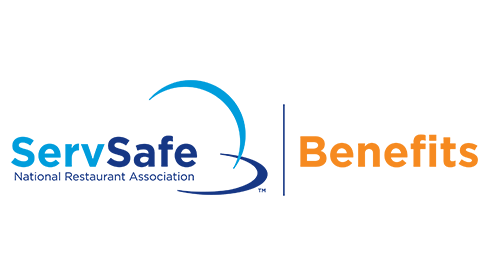The Ultimate Guide to Becoming a Certified ServSafe Food Handler in Your State
Master Safe Practices With Specialist Food Handlers Training
In the realm of food service, the value of understanding safe techniques via expert food trainers training can not be overemphasized. This training not just attends to the essential elements of food safety, such as health and correct storage strategies, but additionally grows a proactive culture that minimizes the danger of foodborne health problems.
Relevance of Food Security
In the world of food service, the importance of food safety and security can not be overemphasized. Guaranteeing the safety and security of food items is essential not just for public health but likewise for the online reputation and success of food solution facilities. Foodborne ailments, which can emerge from incorrect handling and preparation, present significant dangers to customers, often leading to severe wellness consequences and, in many cases, fatalities.
Moreover, the monetary ramifications of food security violations can be significant. Services might face lawful liabilities, raised functional prices due to remembers, and damages to their brand name picture. Developing a strenuous food security culture within an organization helps reduce these dangers, promoting a safe atmosphere for both employees and clients.

Trick Concepts of Safe Handling

One more vital concept is the avoidance of cross-contamination. This entails using different utensils, reducing boards, and surfaces for raw and cooked foods to eliminate the transfer of unsafe microorganisms. In addition, it is critical to preserve appropriate cooking temperatures. Foods should be prepared to their recommended inner temperatures to effectively eliminate pathogenic microbes.
Keeping track of food expiry days and guaranteeing that food is prepared and eaten within secure durations additionally plays an essential role in food security. By sticking to these basic principles, food trainers can significantly contribute to the health and security of customers, guaranteeing that food remains risk-free from preparation with to intake.
Proper Food Storage Strategies
Efficient food storage methods are necessary for keeping the high quality and safety and security of food items. Proper storage space techniques assist stop spoilage, decrease waste, and lessen the threat of foodborne illnesses. To accomplish this, it is critical to understand the ideal temperatures for storing different kinds of food. Fridges must be evaluated or listed below 40 ° F(4 ° C )and freezers at 0 ° F(-18 ° C) to hinder bacterial growth.
In addition, food needs to be kept in airtight containers to protect quality and stop contamination. Identifying containers with days is also advised to ensure that products are utilized within their optimal time structure. Raw meats ought to constantly be kept at the base of the fridge to avoid drippage onto other foods, while ready-to-eat items must be put greater up.
Furthermore, it is essential to comply with the FIFO (First In, First Out) approach, which involves using older products prior to more recent ones. This technique helps minimize the possibilities of food passing by its expiration day - servsafe certifications. By applying these appropriate food storage strategies, food handlers can considerably enhance food safety and security and top quality, ultimately guaranteeing and securing consumers conformity with wellness policies
Effective Hygiene Practices
Preserving proper hygiene techniques is important for food safety and security and stopping contamination in food handling settings. Food trainers need to prioritize individual sanitation by washing their hands frequently, especially after making use of the restroom, handling raw foods, or touching possibly infected surfaces. Making use of ideal handwashing methods, consisting of rubbing for at the very least 20 secs with soap and cozy water, is important to eliminate hazardous microorganisms.
Along with hand hygiene, food handlers ought to wear tidy attires and suitable protective equipment, such as hairnets and handwear covers, to further minimize the danger of contamination. Routinely sterilizing job surface areas and equipment additionally plays a vital function in maintaining a hygienic environment. This includes using authorized disinfecting options and adhering to proper cleansing procedures.
Moreover, food trainers must recognize their wellness condition; those displaying symptoms of disease, particularly intestinal issues, need to abstain from managing food to safeguard customers. By cultivating a culture of sanitation and accountability, food facilities can make certain that efficient health methods are not only instructed yet additionally continually carried out. This dedication to health is fundamental in attaining food security and protecting public wellness.
Advantages of Professional Training
On a regular basis involving in professional training for food handlers supplies numerous benefits that extend beyond basic compliance with wellness policies. Such training outfits food handlers Go Here with crucial expertise about food safety and security standards, allowing them to acknowledge and alleviate dangers related to foodborne health problems. This positive approach not only safeguards public health and wellness but likewise boosts the online reputation of the establishment.
Additionally, professional training promotes a society YOURURL.com of security and liability amongst team. Food handlers that are trained are more probable to comply with safety and security methods, minimizing the possibility of costly blunders or offenses. This, in turn, can bring about fewer inspections and lower insurance policy costs.
Additionally, continuous training ensures that staff members remain upgraded on the current food safety standards and sector finest methods, which are critical in a constantly developing governing environment. It can also enhance employee spirits, as team member really feel much more certain and competent in their duties.
Final Thought
In verdict, expert food trainers training is essential for establishing and preserving high food safety check here standards. Ultimately, the dedication to food safety and security is essential for long-lasting service success.

Monitoring food expiration days and ensuring that food is prepared and eaten within risk-free timeframes likewise plays a crucial duty in food security. By adhering to these essential principles, food trainers can considerably add to the wellness and safety of customers, guaranteeing that food continues to be risk-free from preparation through to intake.
By executing these correct food storage space methods, food handlers can dramatically boost food security and top quality, eventually ensuring and shielding consumers conformity with health regulations.
Such training gears up food handlers with vital expertise regarding food safety criteria, enabling them to recognize and reduce threats connected with foodborne illnesses.In conclusion, specialist food handlers training is vital for establishing and keeping high food safety requirements.